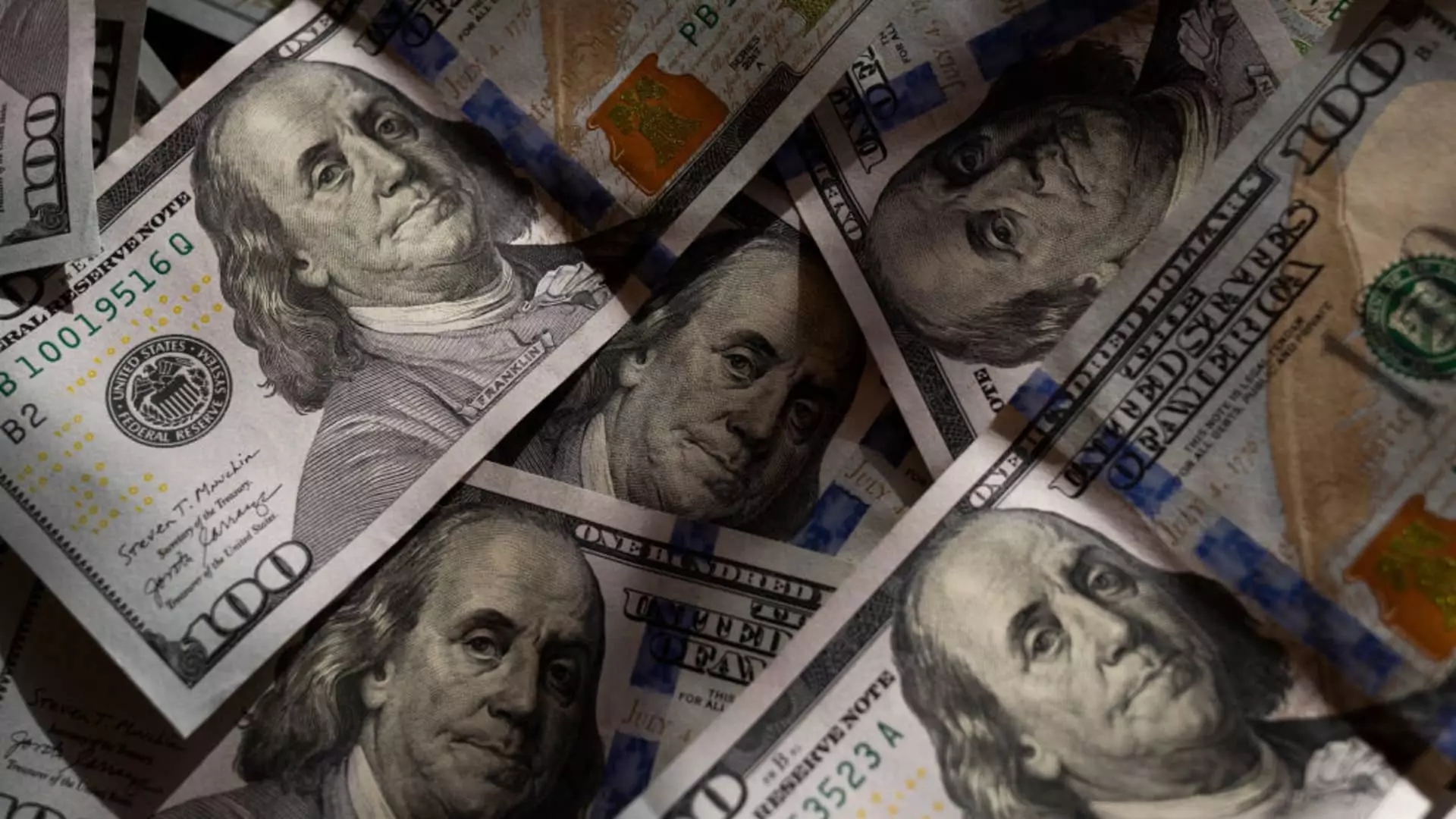The U.S. dollar, once a stronghold of global trade and finance, is now on a troubling path of depreciation, with its value plummeting over 9% this year alone. This gradual decline isn’t merely a number on a chart; it symbolizes the growing uncertainty in U.S. policymaking, sparking concerns across international frontiers. The recent Global Fund Manager Survey from Bank of America reveals a stark sentiment: 61% of investors forecast a continued drop in the dollar’s value over the next year, marking the most dismal outlook for the dollar in nearly two decades. Such widespread pessimism reflects not just a downturn in currency value, but a potential crisis of confidence in U.S. economic stability.
This situation is perplexing, as the dollar’s depreciation induces a dual-edged effect. On one hand, it can foster a sense of relief for many central banks, particularly those in emerging markets that grapple with burdensome dollar-denominated debts. A weaker dollar gives these countries a chance to alleviate some of that pressure; as Adam Button, chief currency analyst at ForexLive, notes, a decline of between 10% and 20% in the dollar often outweighs its implications. Yet, relief comes at a cost—imported inflation is poised to rear its ugly head as currency values shift.
Currency Reactions: A Mixed Bag
The dollar’s fall has led to distinct reactions among global currencies. Safe haven assets like the Japanese yen and Swiss franc have surged against the dollar, gaining over 10% and 11% respectively. The euro has also seen a healthy appreciation, along with other currencies like the Mexican peso and Canadian dollar. Yet, in a scenario that typifies economic inequality, some emerging market currencies have found themselves languishing in the face of a weakened dollar, with both the Vietnamese dong and Indonesian rupiah recently hitting record lows.
Such divergence raises critical questions about central banks’ strategies worldwide. While many would prefer to see a weaker dollar, the challenge lies in navigating the complexities that arise from this scenario. For instance, Thomas Rupf, co-head of VP Bank in Asia, highlights how a stronger local currency can diminish export competitiveness, complicating matters further when tariffs are re-introduced.
The Delicate Balance of Policy Decisions
Central banks across the globe face a precarious balancing act. Rate cuts could provide necessary stimulus in a world grappling with inflation, yet they also risk devaluing domestic currencies and inflating debt burdens. Wael Makarem of Exness encapsulates this dilemma, emphasizing the dangers associated with currency devaluation, especially for emerging economies already teetering on high inflation and debt levels.
Countries with significant foreign debt, particularly those in Asia, must tread this knife-edge carefully. Devaluation might be tempting as a quick-fix economic solution, but its repercussions could elicit a violent backlash, including capital flight and retaliatory measures from the U.S. administration. Financial markets remain highly sensitive, and the stakes are too high for miscalculations.
Responding to the Global Environment
As central banks form responses to this shifting landscape, some, such as the European Central Bank, are jumping at the opportunity presented by declining inflation. The decision to cut rates can have far-reaching implications; however, the price of inaction could mean allowing domestic economies to falter as higher inflation holds sway.
The Swiss National Bank grapples constantly with its own strong currency, acknowledging the complex ramifications of any devaluation strategy. Export-oriented economies that are less reliant on foreign debt may find themselves in a more favorable position to maneuver through this uncertainty, as Brendan McKenna indicates. Yet, as global geopolitical tensions rise, the risk of retaliatory measures looms large, further complicating central banks’ strategies.
The Path Ahead: A Watchful Eye
The current landscape is exceedingly precarious, with the potential for trade negotiations influencing the trajectory of currency values. While some nations exhibit willingness to engage constructively, there is palpable fear that if conflict escalates, it will lead to more protectionist policies and further weaken the position of currencies worldwide.
As we observe these unfolding events, one thing becomes clear: a measured, thoughtful approach is essential. Central banks must maintain vigilance to prevent a full-blown currency war that could exacerbate global economic instability, making the challenges of this period all the more acute as they strive to protect both domestic and international interests.

